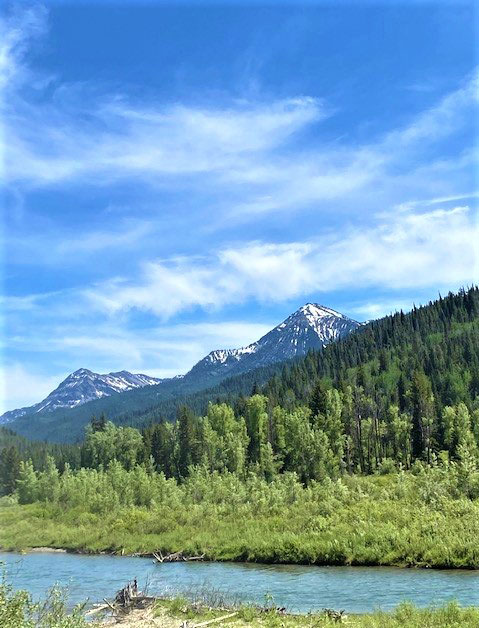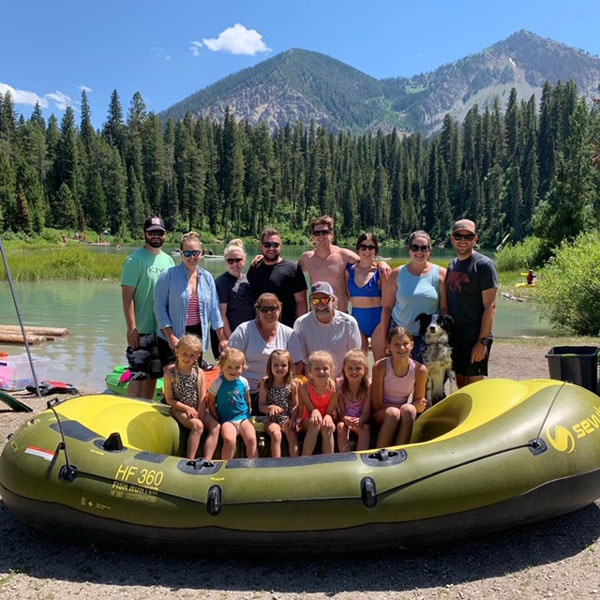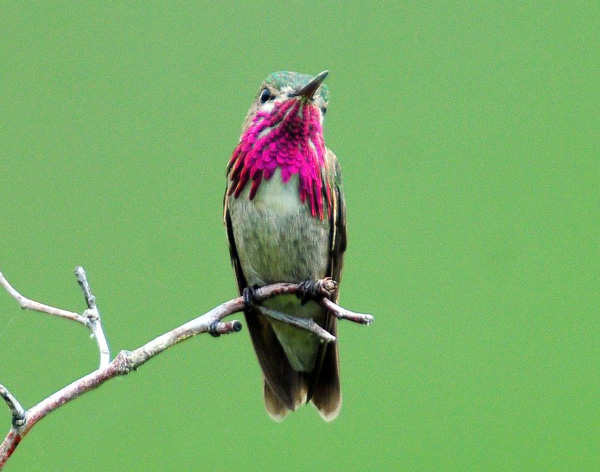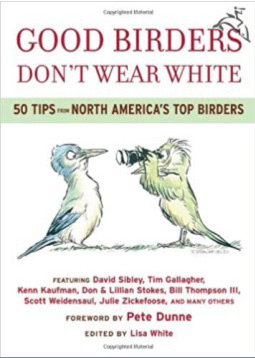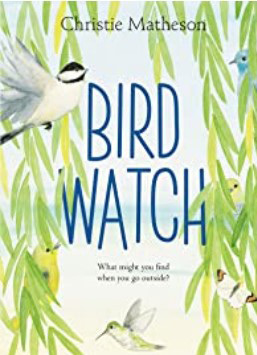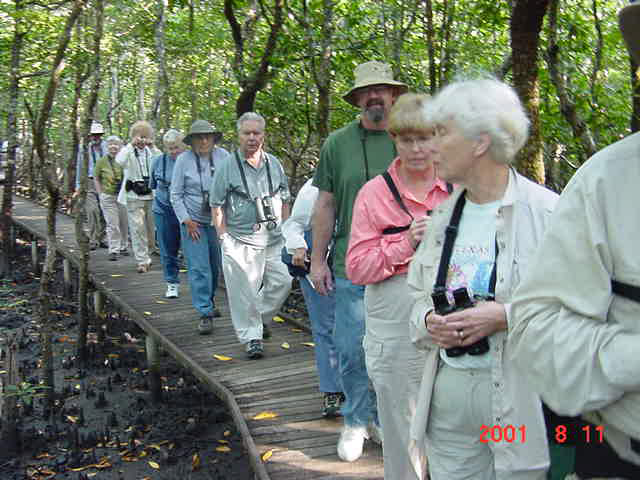|
September
2021
Contents
Monthly Meeting
Upcoming Field Trips
President's Message
Bird of the Month
Book Reviews
Field Trip Reports
SEPTEMBER MEETING:
(See field trips below -- We may have
a virtual meeting next month.)
FIELD TRIPS:
Saturday
Sept 18th
8am to noon-ish
River Lane and Sandy Beach
September Field Trip: River Lane and Sandy Beach, Saturday Sept 18th, 8am
to noon-ish. Meet at 8am in the Sam's Club parking lot. If anyone is ok to
carpool you can work that out together, otherwise we'll drive to River Lane
and walk a bit and move cars down the road as we bird. You can also meet us
there. If you have a scope you are willing to bring please do. We're
looking forward to seeing you!
Raptor watching at Squaw Peak
TBA
|
President's Message
September 2021
by Machelle Johnson
I don't do much traveling, but every year our family
spends a week in Wyoming camping along the Grey's River. We've been going to the
same area for 20 years, since our kids were little. Now our kids and grandkids
all go, and sometimes my parents and other extended family members. The
highlights of our week are rafting on the river, riding our 4-wheelers and
kayaking on the lake.
My favorite time of the day is early morning before everyone is up. I like to
slip out of the trailer and take a walk just as the birds are starting to get
active. Our usual campsite host is a rowdy group of Pine Siskins. One
year we had a Red-naped Sapsucker family, another year it was Yellow
Warblers, but typically it's Pine Siskins. There is also a Calliope
Hummingbird family in the willows nearby and some years there are Ruffed
Grouse. We had Red Crossbills in camp one time, and this year we had
Stellar's Jays and Clark's Nutcrackers showing up every day, they
can rival the grandkids noise any day! Every morning a pair of Sandhill
Cranes fly up the river and every evening they fly back down, calling all
the way. We can set our watch by them, they are pretty consistent! We always see
Dippers and Spotted Sandpipers when we're floating down the river,
and occasionally a female Common Merganser with a brood of little ones
trailing behind as she scurries up the river.
I've got a life list of 85 species seen there over the years. This year I added
American Kestral, Green-winged Teal, Lark Sparrow and Sora. My
favorite site was the year a Bald Eagle circled the small lake, dove in
for a fish, took a victory lab around the lake, then landed on a bare tree
branch and ate his catch. A couple of my kids were in the boat on the lake at
the time and got a front row seat to the show. It was pretty cool!
This yearly outing gives us a chance to unwind and unplug. We play together and
help each other and reconnect. Spending a week outdoors is good for the soul,
and as Dan Fogelberg wrote, "My soul becomes so quiet I can hear my own
beliefs".
I hope you're all able to get out there for some good birding and time in
nature! See you out there!
Thanks,
Machelle
,__,
(0,0)
/)_)
""
|
|
BIRD OF THE MONTH:
|
|
|
|
Marbled Murrelet
(Brachyramphus
marmoratus)
by Keeli Marvel
|
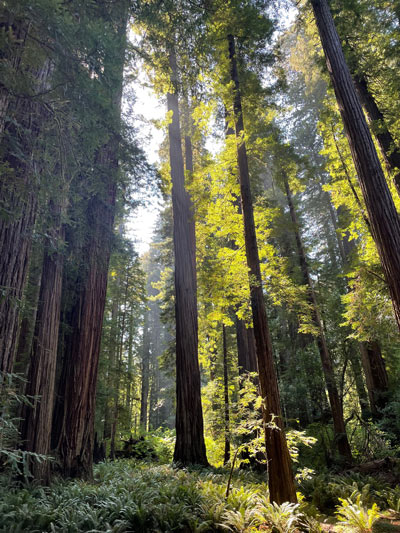
Nesting Habitat
by Keeli Marvel
©Keeli Marvel |
Some ocean dwelling bird
species spend the majority of their lives at sea and only come into land to
breed. Some don’t even venture that far into land, breeding on islands
off-shore. That is not the case for the Marbled Murrelet. These petite little
round ocean birds have been documented nesting up to 50 miles inland in large
old-growth forests on the coastline of the Pacific Northwest. I saw my lifer
Marbled Murrelet paddling around the harbor in the Crescent City, CA while I was
on vacation there this week.
Marbled murrelets are small mottled brown (breeding) or dark gray and white (nonbreeding)
seabirds that belong to the auk family. Up until the 1970s biologists were
baffled about their breeding habits. In fact, according to the Center for
Biological Diversity, marbled murrelets “won the distinction of being the last
bird species in the United States to have its nesting site discovered.” These
funny little birds don’t even build nests, but lay one egg in a mossy depression
on tree branches up to 150 feet off the ground in large, old, trees. In Northern
California they’re known specifically for nesting in the towering coastal
redwood trees. When the marbled murrelet fledglings are ready to leave the nest
they fly directly from their nests way above the ground straight out to the
ocean.
Marbled murrelets can be found along the Pacific coastline from Bristol Bay, AK
in the north down to Monterrey Bay, CA, although they can sometimes be found
further south in California during the nonbreeding season. They are not colonial
and are generally found singly or in pairs both during breeding and non-breeding
season. Their primary prey includes fish and invertebrates such as plankton,
which they forage for in
|
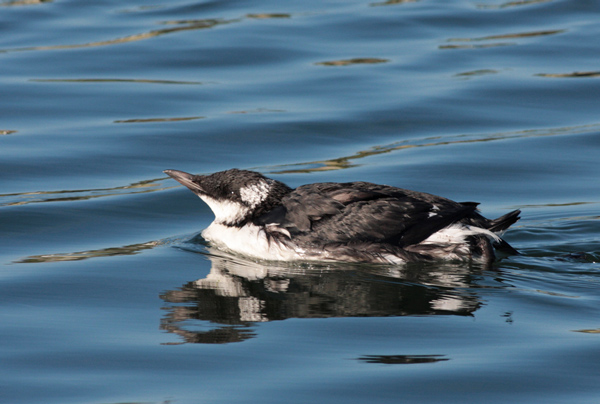
Marbled Murrelet
by
Margaret Sloan
©Margaret Sloan |
in sheltered bays, coves, or sometimes in lakes close
to the shore. In much the same way that penguins do, murrelets use their wings
to “fly” underwater to capture their prey, although unlike their penguin
cousins, murrelets are also capable of flight above water as well.
Because of their solitary nature and unique nesting habits they are not the
easiest to find, so I consider myself lucky for having spotted one on my trip
this week. In recent years, due to the valuable nature of old growth trees to
the commercial logging industry, and to other impacts such as forest fires,
their nesting habitat has been reduced and they are currently listed as
Threatened in WA, OR, and CA under the Endangered Species Act.
Sources: Audubon.org, All About Birds, US Center for Biological Diversity
Happy Birding!
Keeli Marvel
|
-
|
|
|
Book Reviews |
|
-
-
by
Tammy Northrup
Good Birders
Don't Wear White: 50 Tips From North America's Top Birders
Edited by
Lisa White
This was one
of the first books I read when I started birding a few years ago. It’s a fun,
light read with lots of great tips and information about a variety of topics
including: backyard birding, birding etiquette, bird mannerisms, the joy of
birding and more.The chapters are short and engaging. Its easy to read one
chapter, then another and before long you are nearly half way through the book!
The sequel Good Birders Still Don’t Wear White is also worth
reading.
Bird Watch
Written and
Illustrated by Christie Matheson
This delightful, interactive
book is the perfect way to introduce young children to the world of birding. The
simple text invites children to look for and count specific birds hidden in the
beautiful watercolor illustrations of trees, gardens and a night time sky. At
the end of the book there is a list of the 10 birds mentioned in the book with a
few interesting facts about each. This is a book I enjoy sharing with my
grandchildren!
|
|
|
Field Trip Reports
|
|
|
|
The Great Australian Birding Adventure
|
|
Twenty years ago Ned Hill organized a Utah County Birder field
trip to Australia! He wrote a series of 6 articles for the
newsletter about this amazing adventure, but there were no digitized photos
with the text at that time.
Here is the updated account of this
Australian Adventure
complete with photos! |
|
|
|
|
|
|
|
|
If you have had any interesting
field trips on your own this month,
feel free to write a report for the newsletter!
(Send it to:
ucbirders@utahbirds.org)
|
|
|

